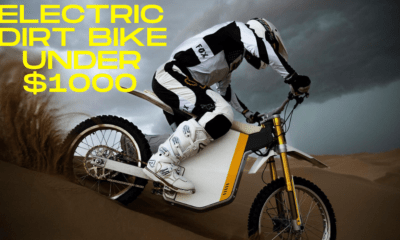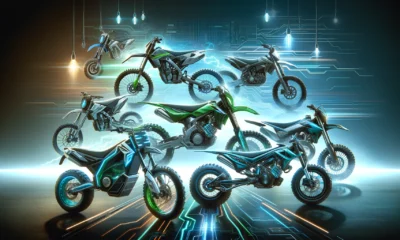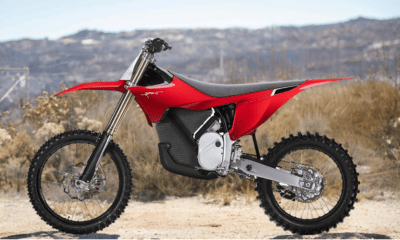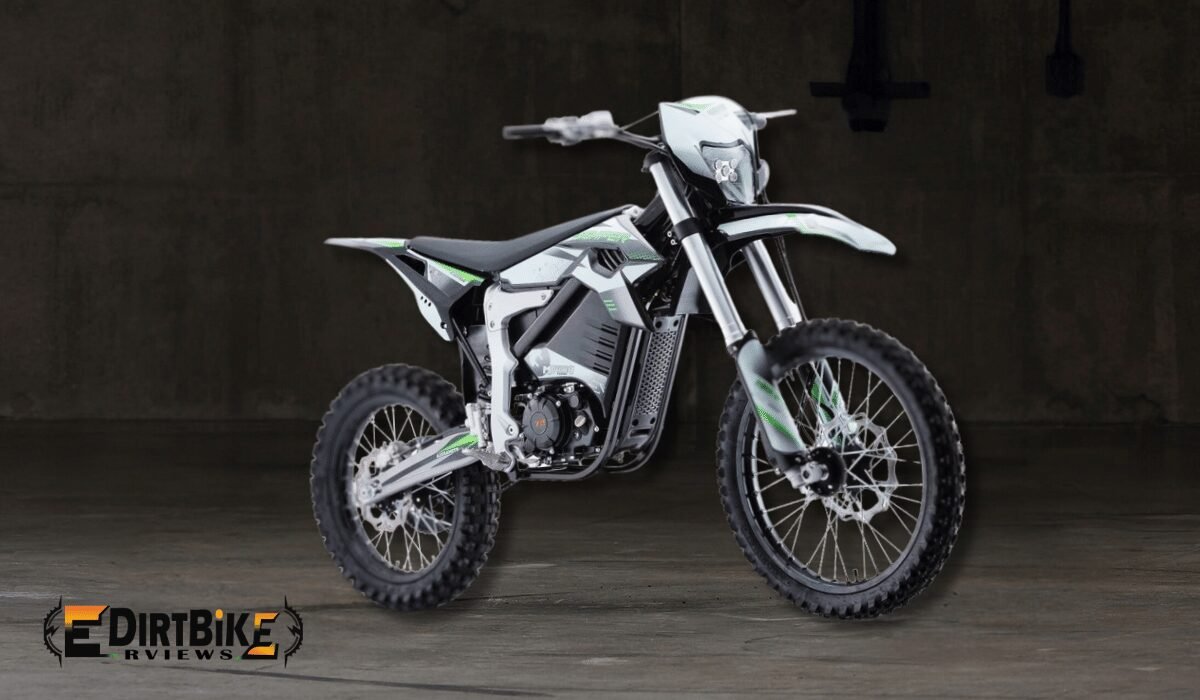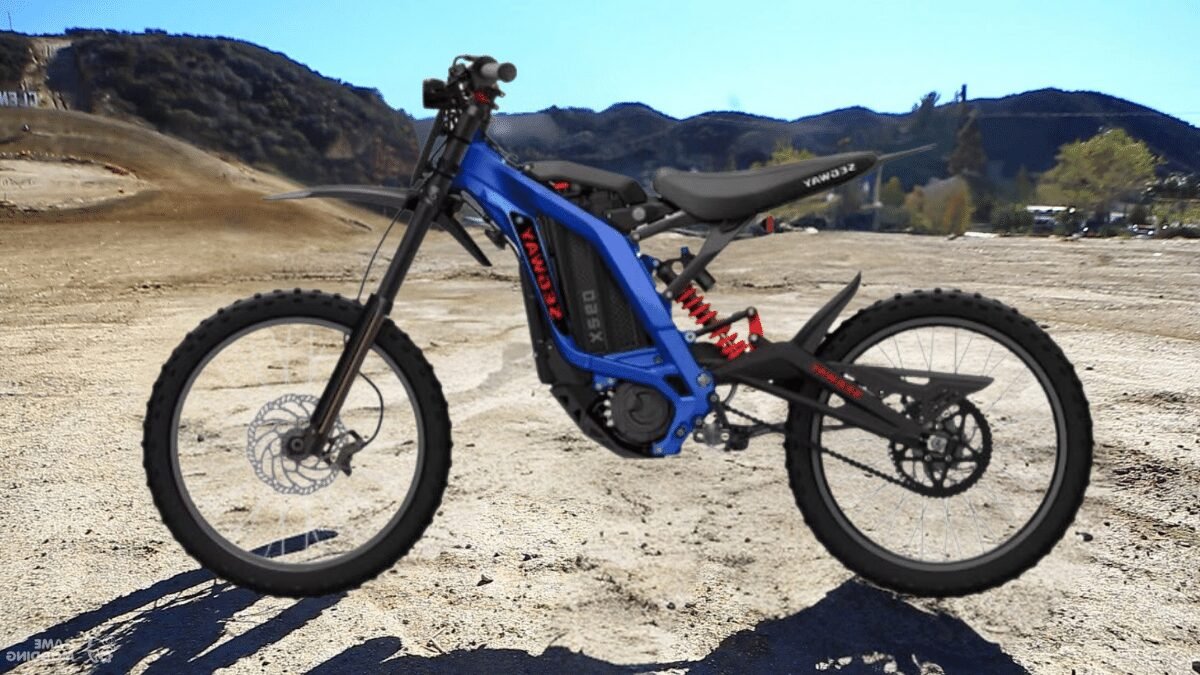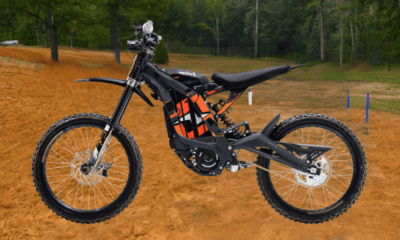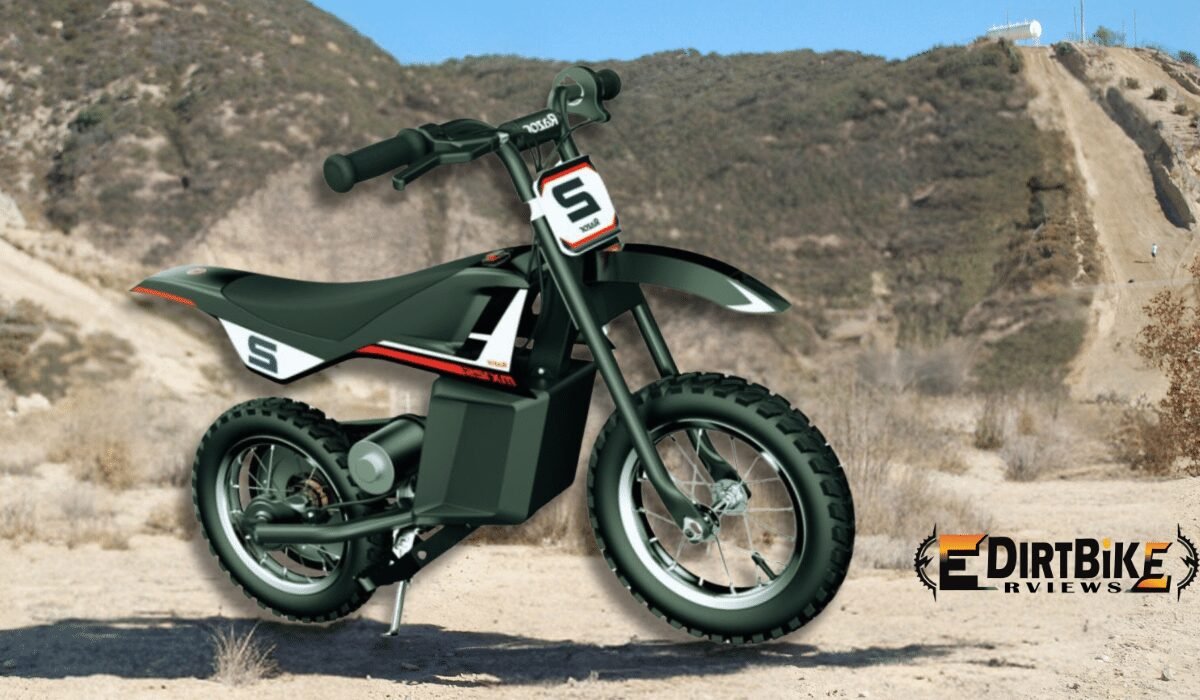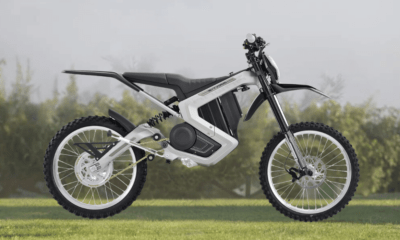E-Bike Tips & Guides
Kid-Safe Gear: Essential Safety Equipment for Young Dirt Bikers
Dive into the world of young dirt biking with ‘Kid-Safe Gear.’ Our guide details essential safety equipment to protect young riders on their thrilling adventures
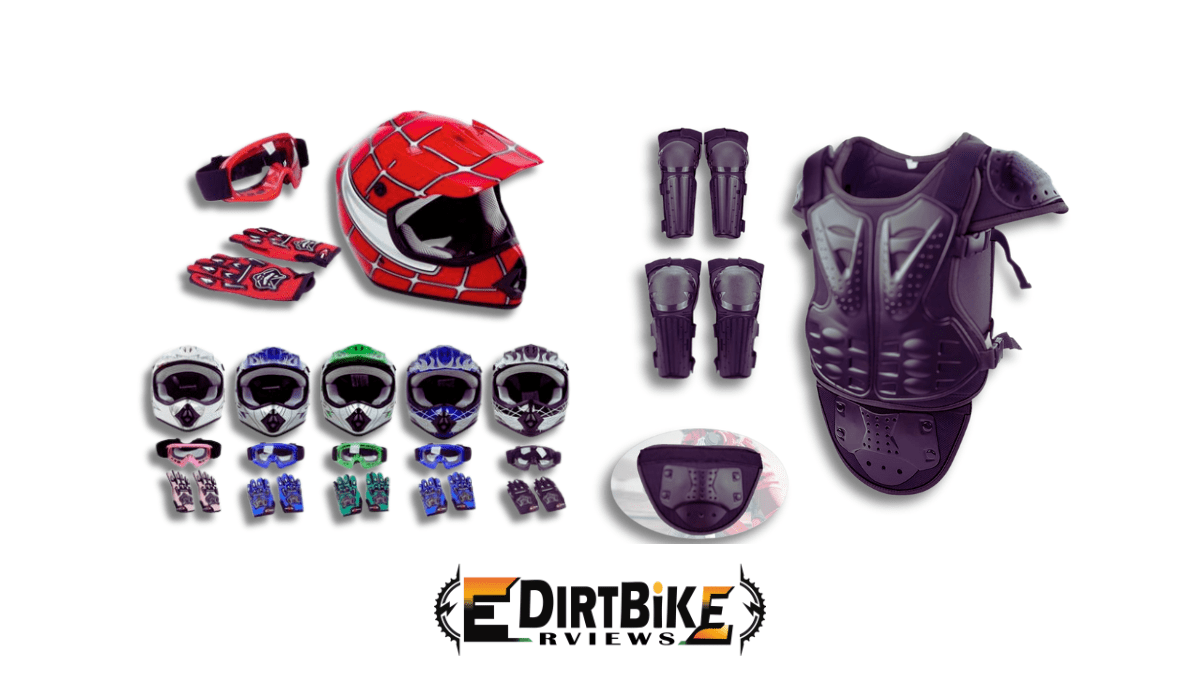
In the world of dirt biking, where adrenaline and adventure meet, the safety of our youngest riders takes precedence. It’s a crucial roadmap for parents and guardians navigating the dynamic terrain of youth dirt biking. This sport, thrilling as it is, carries inherent risks, making the proper safety gear not just an accessory but a necessity.
Table of Contents
I. Introduction
We will focus on educating and empowering as we embark on this journey through the essential safety equipment for young dirt bikers. From the importance of a well-fitted helmet to the protective assurance of body armor, and from the safeguarding essentials of gloves and boots to the clarity provided by proper eye gear, each piece of equipment plays a vital role in ensuring the safety of our young riders.
Understanding the risks and embracing the protective power of safety gear is the first step in preparing our children for a safe, enjoyable, and confidence-building experience in dirt biking. Join us as we delve into the world of kid-safe gear, where every parent, guardian, and young rider will find invaluable insights for a safer ride on the dirt tracks.
II. Understanding the Risks: Why Safety Gear Matters
Dirt biking, a sport synonymous with excitement and freedom, carries its share of risks, especially for young riders. Understanding these risks is crucial in appreciating why safety gear is non-negotiable. The most common hazards in dirt biking include falls, collisions, and the unpredictable nature of rough terrains. These risks can lead to a range of injuries, from minor scrapes to more severe harm like fractures or head injuries.
Safety gear acts as a protective barrier, reducing the severity of injuries and, in many cases, preventing them altogether. A helmet can save a child from a severe head injury, body armor can shield vital organs from impact, and gloves and boots protect against abrasions and fractures. This gear is not just about cushioning falls; it’s about equipping young riders to face the challenges of the sport with a significantly reduced risk of injury.
By comprehending the risks and protective power of safety gear, parents and young riders can approach dirt biking with a more informed and cautious mindset. This understanding is the foundation of a safe and enjoyable dirt biking experience.
III. The Helmet: Your Child’s First Line of Defense
The helmet is undoubtedly critical safety equipment for a young dirt biker. It serves as the first line of defense against one of the most severe injuries: head trauma. The importance of a well-fitting, high-quality helmet cannot be overstated.
A. Importance of Helmets
Head injuries are among the most severe injuries that can occur in dirt biking. A good helmet significantly reduces the risk of concussion and other brain injuries. It absorbs the impact during falls or collisions, protecting the most vulnerable part of the body.
B. Types and Features for Optimal Protection
When selecting a helmet, it’s essential to consider various types and features:
- Full-face Helmets: These offer complete coverage and are ideal for young riders, providing maximum protection.
- Material and Construction: Look for helmets made of durable materials like polycarbonate or fiberglass that can withstand high impacts.
- Fit and Comfort: The helmet should fit snugly but comfortably. It should not be too tight or loose, and the chin strap must be adjustable for a secure fit.
- Certification: Ensure the helmet meets safety standards such as DOT or SNELL ratings.
Investing in a high-quality helmet is investing in your child’s safety. In the next section, we will explore the role of body armor in protecting young dirt bikers.
IV. Body Armor: Shielding the Core
Body armor is an essential component of a young rider’s safety gear, providing crucial protection to the body’s core areas. It’s designed to absorb and dissipate the impact from falls or collisions, safeguarding against chest, back, and shoulder injuries.
A. Different Types of Body Armor
Body armor comes in various forms, each offering specific protection:
- Chest Protectors: These guard the chest and ribs against impacts.
- Back Protectors: They offer vital protection to the spine and back area.
- Full-body Suits: Combining chest and back protectors, full-body suits offer comprehensive upper-body protection.
B. Significance in Safeguarding Vital Areas
The torso houses critical organs and the spine, making its protection paramount. Body armor is especially crucial in off-road dirt biking, where riders may encounter unpredictable terrains and obstacles.
C. Comfort and Mobility
While protection is crucial, the armor must not restrict the rider’s mobility. It should fit snugly, allowing freedom of movement. Look for breathable materials and adjustable straps for a comfortable yet secure fit.
Equipping young riders with appropriate body armor is critical to ensuring their safety. In the next section, we will discuss the importance of gloves and boots in protecting the extremities.
V. Gloves and Boots: The Essentials for Hands and Feet
Protecting the extremities is vital in dirt biking, and that’s where gloves and boots come into play. They are essential for young riders, protecting their hands and feet, particularly vulnerable during falls or collisions.
A. Gloves: Safeguarding Hands
Gloves are not just for grip; they protect hands from abrasions, cuts, and, in some cases, severe injuries. When choosing gloves:
- Look for Durability: High-quality materials can withstand abrasion and provide better protection.
- Ensure a Proper Fit: Gloves should fit snugly without restricting movement.
- Consider Additional Features: Reinforced palms and knuckle protection enhance safety.
B. Boots: Protecting Feet and Ankles
Feet and ankles are at risk of sprains, fractures, and impacts. Quality boots are essential for their protection. Key aspects include:
- Sturdy Construction: Look for boots with strong ankle support and reinforced toe areas.
- Correct Fit: Well-fitting boots will protect better and provide more comfortable control over the bike.
- Sole Grip and Flexibility: Good traction and flexibility help maintain control and balance while riding.
Gloves and boots are critical for a young rider’s protection. They prevent minor injuries and significantly reduce the severity of more severe accidents. In the following section, we’ll discuss the importance of eye protection in young dirt biking.
VI. Eye Protection: A Clear View for Safety
Eye protection is an often overlooked but critical component of a young dirt biker’s safety gear. Proper eye gear ensures that the rider’s vision remains unobstructed, protecting against dust, debris, and potential hazards that can impair sight while riding.
A. Necessity of Goggles and Other Eye Protection Gear
Dirt biking environments are filled with elements like dirt, mud, and even insects that can get into the eyes. Goggles or protective eyewear:
- Prevent Foreign Objects: They shield the eyes from debris and reduce the risk of eye injuries.
- Enhance Visibility: Good eye gear can improve visibility in different lighting conditions and terrains.
B. Features to Look For
When choosing goggles or eye protection:
- Fit and Comfort: Ensure they fit well with the helmet and are comfortable for long rides.
- Lens Quality: Look for lenses that offer UV protection and are anti-fog for clear vision in various weather conditions.
- Ventilation: Adequate ventilation helps prevent fogging and ensures comfort.
Eye protection is an integral part of a young rider’s safety gear, helping to maintain clear vision and protect against eye injuries. The following section will highlight additional safety accessories that complement the primary gear.
VII. Additional Safety Accessories
Beyond the fundamental safety equipment, additional accessories can enhance a young rider’s protection and comfort on the dirt track. These items might not be the first ones you think of, but their role in overall safety is significant.
A. Knee and Elbow Pads
Knee and elbow pads provide crucial protection for joints. Falls are common in dirt biking, and these areas are often the first to contact the ground. Pads help to absorb impact and reduce the risk of scrapes and more severe joint injuries.
B. Neck Braces
Neck braces are designed to reduce the risk of neck injuries, a critical consideration in a high-impact sport like dirt biking. They help to limit the neck’s range of motion in an accident, potentially preventing serious injuries.
C. Kidney Belts
Kidney belts offer additional support to the lower back and abdomen, which is especially useful in rough riding conditions. They help to stabilize the core and can reduce fatigue during longer rides.
Each of these accessories plays a role in the comprehensive safety outfit for a young dirt biker. They work with the primary gear to provide a robust safety solution.
In the next section, we will discuss the importance of choosing the right size and fit for all this safety gear, ensuring maximum effectiveness and comfort.
VIII. Choosing the Right Size and Fit
Selecting safety gear that is the correct size and fit is crucial for ensuring the effectiveness of the equipment. Ill-fitting gear can not only be uncomfortable but can also compromise the safety of the young rider.
A. Importance of Proper Fitting Gear
Safety gear must fit snugly but not too tightly. Too loose can shift out of place, leaving body parts unprotected, while overly tight gear can restrict movement and be uncomfortable, discouraging its consistent use.
B. Tips for Ensuring Proper Fit
- Try Before Buying: Wherever possible, have the child try on gear to check for comfort and fit.
- Consult Size Charts: Use the manufacturer’s size charts as a guide, but remember that fit can vary between brands.
- Adjustable Features: Look for gear with adjustable straps or settings that can be tailored to your child’s body.
Properly fitting gear offers better protection and ensures that the young rider can move freely and focus on enjoying their ride. The next section will discuss how to maintain and care for safety gear to ensure its longevity and effectiveness.
IX. Maintenance and Care of Safety Gear
Proper maintenance and care of safety gear are essential to ensure it remains effective and can provide long-term protection for your young rider. Well-maintained gear lasts longer and performs better in terms of safety.
A. Regular Inspection and Cleaning
- Regular Checks: Inspect the gear for signs of wear and tear, such as cracks in helmets or fraying straps on body armor.
- Cleaning: Clean the gear according to the manufacturer’s instructions. A mild soap and water solution is sufficient for most items, but avoid harsh chemicals that could degrade the materials.
B. Storage and Handling
- Proper Storage: Store the gear in a cool, dry place away from direct sunlight, which can weaken some materials over time.
- Careful Handling: Teach your child to handle their gear carefully, avoiding unnecessary stress or impact that could compromise its integrity.
C. Replacement and Upgrading
- Timely Replacement: Replace any safety gear involved in a significant impact or accident, even if no visible damage is evident.
- Upgrading: As your child grows, regularly assess whether their gear needs upgrading to suit their current size and skill level.
Maintaining safety gear is an ongoing process that contributes significantly to the overall safety of a young dirt biker. Next, we will explore the role of technology in enhancing the safety gear used by young riders.
X. The Role of Technology in Safety Gear
The advancement of technology has significantly enhanced the safety gear available for young dirt bikers, making it more effective, comfortable, and user-friendly. Understanding these technological improvements can help parents choose the best safety equipment for their children.
A. Innovative Materials and Design
- Materials: Modern safety gear often incorporates advanced materials that are lightweight yet highly durable, offering improved protection without the bulk.
- Design: Ergonomic designs ensure better fit and comfort while enhancing the protective features of the gear.
B. Safety Technology Enhancements
- Impact Absorption: Foam and padding technology developments have led to better impact absorption, which is crucial in helmets and body armor.
- Ventilation Systems: Improved helmets and body armor ventilation ensure better air circulation, keeping riders comfortable during long rides.
C. Smart Safety Gear
- Integrated Technology: Some modern gear includes integrated technology like GPS tracking, communication systems, and even crash sensors that alert in case of a severe impact.
- Customization and Adjustability: Technological advancements have made customizing and adjusting gear easier, ensuring a perfect fit for growing riders.
These technological advancements redefine what safety gear can do, offering young dirt bikers enhanced protection and comfort. In the following section, we’ll discuss the importance of educating young riders on correctly using safety gear.
XI. Educating Young Riders on Safety
Equipping your child with safety gear is only part of the equation. Educating them on this gear’s proper use and importance is equally vital. Young dirt bikers must understand why safety gear matters and how to use it effectively.
A. Importance of Education
- Empowering Riders: Teaching young riders about safety gear empowers them to take responsibility for their safety.
- Building Confidence: Understanding the protective role of gear can boost a child’s confidence while riding.
B. Demonstrating Proper Use
- Hands-On Demonstrations: Show your child how to put on and adjust each piece of safety gear correctly.
- Practical Training: Encourage your child to practice riding with their gear to get used to the feel and mobility it provides.
C. Setting the Example
- Lead by Example: Always wear appropriate safety gear when riding with your child, setting a positive example.
- Enforce Consistency: Wear safety gear, a non-negotiable rule for every ride, regardless of experience or skill level.
Educating young riders on safety gear instills responsible habits and enhances their understanding of the gear’s protective capabilities. The following section will explore personal opinions and feedback on selecting and using kid-safe gear.
XII. Personal Opinion and Feedback
As a parent and enthusiast of youth dirt biking, I believe that ensuring the safety of our young riders should always be the top priority. Over the years, I’ve witnessed the sport evolve, and safety gear has become more advanced and accessible than ever before.
In my opinion, investing in high-quality safety gear for young dirt bikers is an absolute must. It’s not just about compliance with regulations; it’s about protecting our children and allowing them to enjoy their passion with confidence and peace of mind.
I’ve seen firsthand how well-fitted helmets, body armor, gloves, boots, and eye protection can significantly impact a young rider’s experience. They offer protection and contribute to comfort and control while on the track.
One piece of advice I’d like to share is to involve your child in selecting their safety gear. Let them choose colors and styles they want within the safety standards. This ensures they have the gear they’re excited to wear and fosters a sense of responsibility.
Remember, safety gear is not just a formality; it’s a lifeline on the dirt track. By prioritizing safety, educating young riders, and investing in quality gear, we can create a safer and more enjoyable environment for our kids to explore their love for dirt biking.
XIII. Conclusion
As we conclude our journey through the Essential Safety Equipment for Young Dirt Bikers, one message stands clear: safety should always come first. Dirt biking is an exhilarating sport that offers numerous benefits for young riders, from building confidence to developing essential motor skills. However, it also comes with its fair share of risks.
The safety gear discussed in this guide, from helmets and body armor to gloves, boots, and eye protection, serves as the guardian angels of our young riders. They minimize the risk of injuries and instill a sense of responsibility and discipline in our children.
By understanding the risks, choosing the right gear, and educating our young riders on its proper use, we can create an environment where dirt biking is not just an adventure but a safe and enjoyable one. Remember to prioritize fit, comfort, and quality when selecting safety gear, and never compromise on your child’s safety.
Safety gear continues to improve, offering enhanced protection and comfort. Stay informed about the latest advancements, and consider upgrading your child’s gear as they grow and gain experience.
With these insights and a commitment to safety, you can provide your young dirt biker with the best possible start to their thrilling journey on the dirt tracks. Here’s to safe, enjoyable, and confidence-building rides for our young adventurers!
E-Bike Tips & Guides
Weather Impact on Electric Dirt Biking
Explore the dynamic between electric dirt bikes and varying weather conditions, including how temperature, rain, and terrain affect performance. Learn maintenance and riding tips for optimal biking experience.
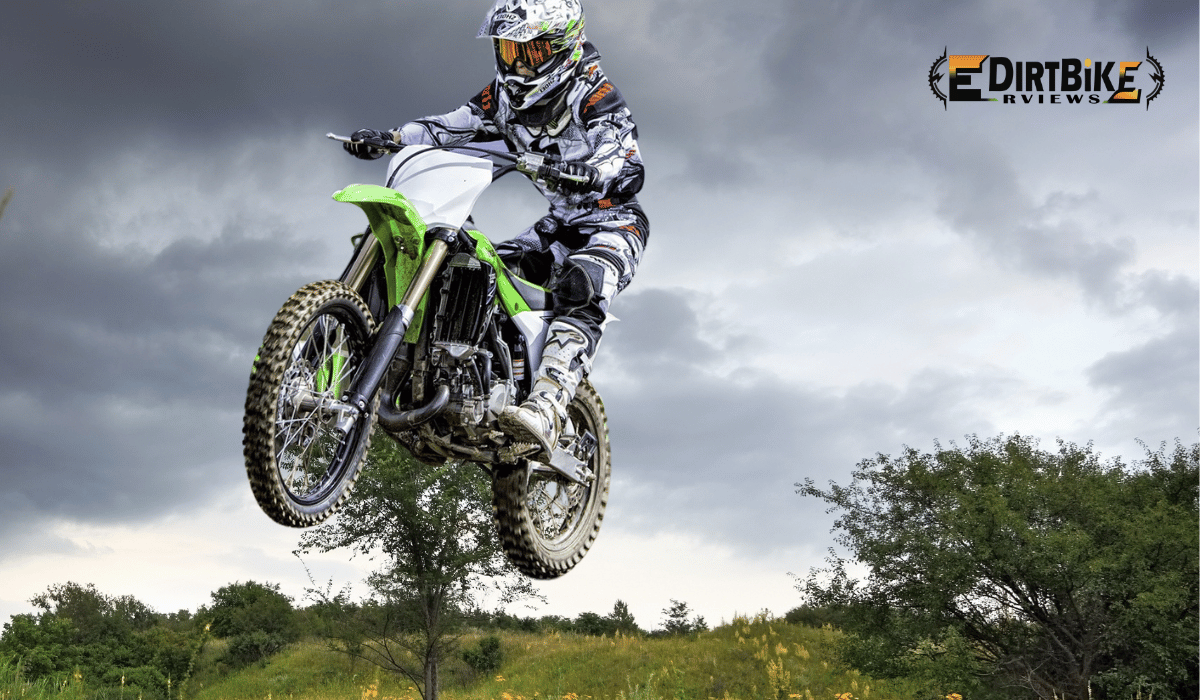
Understanding the impact of weather on electric dirt biking is crucial for both the safety and enjoyment of the rider, as well as for the longevity and performance of the bike. Weather conditions can dramatically affect the riding experience, from altering the bike’s handling and efficiency to challenging the rider’s skills and preparedness. For instance, wet conditions can affect traction and braking, while extreme temperatures can influence battery performance and bike reliability.
Moreover, as electric dirt bikes rely on electrical components and battery systems, they are susceptible to weather-related challenges unique to traditional bikes. Elements like rain, mud, snow, and extreme temperatures can significantly impact the electrical systems, battery life, and overall bike durability. Therefore, riders need to know how different weather conditions can affect their bike’s performance and how to prepare and respond to these challenges adequately.
Electric dirt biking is an exhilarating sport and a testament to the advancements in sustainable transportation. However, with this innovation comes the need to understand and adapt to how weather can influence the electric dirt biking experience. This knowledge ensures the rider’s safety and enjoyment and the optimal performance and longevity of their electric dirt bike.
Table of Contents
The Influence of Weather on Electric Dirt Bike Performance
Temperature Effects
Temperature fluctuations notably influence the performance of electric dirt bikes. Batteries, the powerhouse of these bikes, are sensitive to extreme temperatures. Battery capacity can decrease in cold conditions, reducing range and power output. The cold can cause the batteries to discharge more quickly and reduce efficiency. Conversely, in sweltering conditions, batteries can overheat, which may lead to thermal throttling, where the system reduces power output to prevent damage. This thermal effect can also accelerate battery degradation over time, affecting the long-term performance and reliability of the bike.
Rain and Water Exposure
Electric dirt bikes, like all electrical systems, have a degree of vulnerability to water. While many modern electric bikes are designed with waterproofing features to withstand typical wet conditions encountered off-road, prolonged exposure to water or riding in heavy rain can still pose risks. Water can penetrate seals and enclosures, potentially damaging the electrical components and battery. Furthermore, wet conditions can affect traction and braking, increasing the risk of accidents. Riders must understand their bike’s water resistance capabilities and take appropriate measures to protect it from excessive water exposure.
Wind Conditions
Wind can also impact the riding experience on an electric dirt bike, though the effects are more indirect than temperature and rain. Strong winds can make riding more challenging, especially in open or exposed areas, by affecting stability and rider control. Crosswinds can push the rider off course, requiring more effort to maintain balance and direction. Additionally, headwinds can cause increased energy consumption as the rider and bike work harder against the wind resistance, potentially reducing the bike’s range.
Terrain and Weather Interplay
The interplay between terrain and weather significantly affects electric dirt bike performance. Varied terrains like mud, sand, and snow can behave differently under various weather conditions, affecting traction and control. For example, mud can become more slippery and challenging to navigate after rain, requiring more power and battery usage to maintain speed and control. Snow and ice can reduce traction, necessitating careful handling to prevent accidents. The bike’s performance on these terrains, influenced by weather conditions, highlights the importance of understanding and adapting to the combined effects of weather and terrain for safe and efficient riding.
In conclusion, the performance of electric dirt bikes is considerably affected by weather conditions, including temperature variations, rain and water exposure, wind, and the complex interaction between terrain and weather. Riders must be aware of these factors and prepare accordingly to ensure their safety and the optimal functioning of their bikes in diverse weather conditions.
Electric Dirt Bike Design for Weather Adaptability
Waterproofing and Water Resistance
Manufacturers of electric dirt bikes prioritize waterproofing and water resistance in their designs to enhance the bikes’ adaptability to various weather conditions. Critical components such as the battery, motor, and control systems are encased in waterproof or water-resistant housings to prevent moisture ingress. Seals and gaskets are employed at junctures and openings to block water. At the same time, protective coatings on electrical circuits and connectors provide an additional defense against corrosion and short-circuiting. These design features ensure electric dirt bikes can withstand rain and wet terrain exposure, allowing riders to navigate through challenging conditions without compromising the bike’s performance or safety.
Temperature Management Systems
Electric dirt bikes are equipped with temperature management systems to address the challenges posed by temperature extremes. These systems are designed to maintain optimal battery and motor performance in hot and cold conditions. In cold weather, battery management systems (BMS) can include thermal insulation and heating mechanisms to prevent the battery’s temperature from dropping too low, thus preserving its efficiency and range. In contrast, for hot weather conditions, these systems often feature cooling technologies like air or liquid cooling to dissipate excess heat and prevent overheating. By regulating the temperature, these management systems protect the bike’s components, ensuring consistent performance and prolonging the lifespan of the battery and motor.
Durability in Various Weather Conditions
The overall durability of electric dirt bikes in diverse weather conditions is a critical consideration in their design. Materials used in the construction of the bike, such as frames, casings, and external components, are chosen for their strength, corrosion resistance, and ability to withstand environmental stress. This includes using alloys and plastics that resist rust and decay when exposed to moisture, mud, or salt. The design also considers the impact of UV radiation, ensuring that materials do not degrade quickly when exposed to sunlight for prolonged periods. These design choices ensure that electric dirt bikes remain robust and reliable, whether ridden in scorching heat, cold, or during torrential rains.
In conclusion, the design of electric dirt bikes for weather adaptability focuses on waterproofing, temperature management, and overall durability. These features collectively ensure that the bikes can withstand and perform optimally in various weather conditions, providing riders with confidence in the reliability and safety of their electric dirt bikes regardless of the environmental challenges they face.
Riding Strategies in Different Weather Conditions
Tips for Wet Conditions
Riding an electric dirt bike in wet conditions requires careful preparation and technique. Firstly, riders should ensure their bike’s waterproofing is up to standard to prevent water-related damage. When navigating wet terrain, reducing speed and using gentle, smooth inputs for throttle, brakes, and steering can help maintain control and prevent skidding or sliding. Avoiding deep puddles or streams where water could submerge critical components is also essential. Tires with appropriate tread patterns can enhance grip in slippery conditions, and riders should wear waterproof gear to stay dry and focused.
Handling Cold Weather Riding
Cold weather can significantly impact battery performance and rider comfort. Riders should store their electric dirt bike in a temperature-controlled environment to maximize battery life and efficiency when not in use. Pre-warming the battery before riding can also help. On the trail, conserving battery power by maintaining a steady pace and avoiding unnecessary acceleration is wise. Dressing in layers with thermal and windproof clothing will keep the rider warm and reduce the cold’s impact on performance and endurance.
Strategies for Windy Conditions
In windy conditions, the key is to reduce the bike’s profile against the wind and maintain stability. Leaning slightly into the wind can help counteract its force. Riders should be prepared for sudden gusts, keeping a relaxed grip on the handlebars to allow quick adjustments. Reducing speed and avoiding risky maneuvers is also advisable, as wind can unpredictably affect the bike’s path. Choosing routes sheltered from the wind, when possible, can make for a more enjoyable and less exhausting ride.
Adapting to Changing Terrains
Electric dirt bikes must handle a variety of terrains, which can change rapidly with the weather. Riders should be observant and ready to adjust their riding style accordingly. For instance, it may be necessary to shift weight rearward to improve traction in muddy or sandy conditions. On rocky or uneven terrain, standing on the pegs can help absorb shocks and give better control. It’s crucial to continuously assess the terrain and adjust speed, riding position, and bike settings (like suspension and power delivery) to safely and effectively navigate different landscapes.
In conclusion, riding an electric dirt bike in varying weather conditions demands adaptability and skill. By employing strategies tailored to wet, cold, and windy environments and being prepared to adjust to changing terrains, riders can enhance their experience and ensure both their safety and the longevity of their bike.
Maintenance and Care for Electric Dirt Bikes in Varied Climates
Routine Checks and Maintenance
Regular maintenance is essential for electric dirt bikes’ optimal performance and longevity, especially when ridden in varied climates. Routine checks should include inspecting the battery’s charge level and health, ensuring all electrical connections are secure and corrosion-free, and verifying that the motor and controller are functioning correctly. Mechanical components like brakes, suspension, and tires also need regular inspection for wear and proper operation. It’s essential to follow the manufacturer’s recommended service intervals and to promptly address any issues to prevent minor problems from escalating into significant failures.
Post-Ride Care in Adverse Weather
After riding in rain, snow, or dusty conditions, cleaning the bike properly is crucial to remove any debris, moisture, or corrosive substances that could damage its components. Start by gently rinsing the bike to wash away mud and grime, avoiding direct water spray on sensitive electrical parts. To prevent moisture-related issues, dry the bike thoroughly, especially around electrical connections and battery compartments. Lubricating moving parts, such as the chain and suspension pivots, can help protect them from rust and wear. Inspecting the bike for any damage caused by exposure to harsh conditions should be part of the post-ride care routine.
Long-term Storage and Weather Considerations
When storing an electric dirt bike for extended periods, particularly in regions with extreme weather, it’s essential to consider the environment’s impact on the bike’s components. The battery should be stored at a moderate temperature and charged to the level recommended by the manufacturer to maintain its health. The storage area should be dry and free from extreme temperature fluctuations to prevent damage to the bike’s electrical and mechanical systems. Covering the motorcycle with a breathable, waterproof cover can protect it from dust and moisture. Additionally, periodic checks during storage can help ensure that the bike remains in good condition and is ready to perform reliably when next used.
In summary, maintaining and caring for an electric dirt bike in varied climates involves routine checks, diligent post-ride care, and proper storage practices. These efforts help to ensure the bike’s reliability, performance, and longevity, enabling riders to enjoy their electric dirt biking experience in any weather condition.
Personal Insights on Electric Dirt Biking
Unique Experiences and Observations
Having spent considerable time navigating diverse terrains and weather conditions on electric dirt bikes, I’ve observed their remarkable evolution and adaptation to the off-road environment. One standout experience was riding through a dense forest trail after a heavy rainstorm. The silent operation of the electric motor allowed me to immerse fully in the natural surroundings, a stark contrast to the noise of a gas-powered bike. The bike’s instant torque and smooth power delivery were exceptional, providing precise control through slippery sections and over wet leaves, showcasing the synergy between technology and nature.
Expert Opinion on Electric Dirt Bike Performance in Various Weathers
From a performance perspective, electric dirt bikes exhibit unique strengths and vulnerabilities across different weather conditions. I noticed a decreased battery range in cold weather, highlighting the importance of thermal management systems that can maintain battery efficiency. However, the low-end torque of electric motors is a boon in snowy or muddy conditions, offering controlled power output that helps maintain traction.
In wet conditions, the reduced noise and absence of exhaust emissions of electric bikes enhance the riding experience, though the importance of waterproofing becomes evident to protect the electrical components. During hot weather rides, the absence of a heat-emitting engine makes electric dirt bikes more comfortable, though attention must be paid to preventing battery overheating.
Electric dirt bikes also excel in windy conditions, where their lower center of gravity and stable handling inspire rider confidence. The ability to adjust power settings on the fly allows for a tailored riding experience, responding dynamically to the challenges of gusty winds.
In conclusion, my experiences with electric dirt biking have affirmed their potential to transform off-road riding. Their performance in various weather conditions, combined with the environmental benefits, positions them as a compelling choice for the future of the sport. While there are challenges related to weather impacts on battery life and electrical systems, ongoing technological advancements continue to enhance their resilience and capability, making electric dirt bikes increasingly viable and enjoyable under diverse environmental conditions.
Frequently Asked Questions (FAQs)
Does rain affect electric bikes?
Rain can affect electric dirt bikes, especially if they are not waterproofed. Modern electric bikes are generally designed to handle light to moderate rain without damage to the electrical components, thanks to protective casings and seals. However, prolonged exposure to heavy rain or submersion in water can lead to potential risks like short-circuiting or corrosion. It’s essential to check the manufacturer’s guidelines on the bike’s water resistance and take precautions during wet conditions.
How cold is too cold for Ebikes?
Electric dirt bikes can operate in cold weather, but their performance may diminish below freezing (0°C or 32°F). Extreme cold can reduce battery efficiency and capacity, leading to shorter ride times and decreased power. To mitigate cold weather effects, it is advisable to store the bike in a warmer environment when not in use and use thermal insulation for the battery, if available. Generally, temperatures below -10°C (14°F) are challenging for electric bikes and could warrant special considerations for battery care and bike operation.
Do electric bikes work in the snow?
Yes, electric dirt bikes can work in the snow, provided they have the appropriate tires and the rider has the necessary skills. The key is to maintain traction and control in slippery conditions. Fat tires with deep treads benefit snow riding, providing better grip. However, extreme cold and wet conditions can affect battery performance and risk damage to the electrical system, so it’s crucial to ensure the bike is suitably equipped and maintained for snowy conditions.
Can heat affect electric dirt bike performance?
Yes, high temperatures can cause the battery to overheat, reducing efficiency and potential damage. Cooling systems and proper thermal management are essential to maintaining performance in hot weather.
Are electric dirt bikes suitable for all seasons?
Electric dirt bikes can be ideal for all seasons, but their performance and maintenance needs vary with the weather. Riders must adapt to seasonal conditions, ensuring their motorcycle is appropriately prepared and maintained for optimal performance year-round.
How can I protect my electric dirt bike from weather-related wear and tear?
Regular maintenance, proper storage, and using weather-appropriate protective gear for your bike, such as covers and guards, can help protect it from weather-related wear and tear. Following the manufacturer’s guidelines for care and maintenance is also crucial.
These FAQs underscore the importance of understanding the interplay between weather conditions and electric dirt bike performance. They emphasize proper preparation and maintenance to ensure a safe and enjoyable riding experience.
Conclusion
Throughout this comprehensive exploration, we have delved into the significant impact of weather conditions on electric dirt biking, scrutinizing how elements like temperature, rain, wind, and terrain interact with these innovative machines. We’ve learned that electric dirt bikes are designed with weather adaptability in mind, featuring waterproofing, temperature management systems, and robust durability. However, they still require mindful riding strategies and maintenance to navigate varied climates successfully.
Electric dirt bikes offer a sustainable and exhilarating off-road experience, with technological advancements enhancing their performance and reliability in different weather scenarios. From wet and muddy trails to cold, windy, or hot conditions, these bikes have proven capable of handling diverse environmental challenges, albeit with considerations for battery life and component protection.
Electric dirt bikes are a testament to the progress in off-road motorcycling, marrying eco-friendliness with performance. Their resilience against weather challenges, coupled with the proper care and handling, ensures they are a novelty and a viable and sustainable option for enthusiasts and professionals alike. As technology continues to evolve, the future of electric dirt biking looks promising, offering riders the thrill of the ride while minimizing environmental impact.
E-Bike Tips & Guides
Choosing the Right Tires for Your Electric Dirt Bike
With our expert guide, master the art of selecting the perfect tires for your electric dirt bike. Discover how the right tires enhance every ride’s performance, safety, and enjoyment.
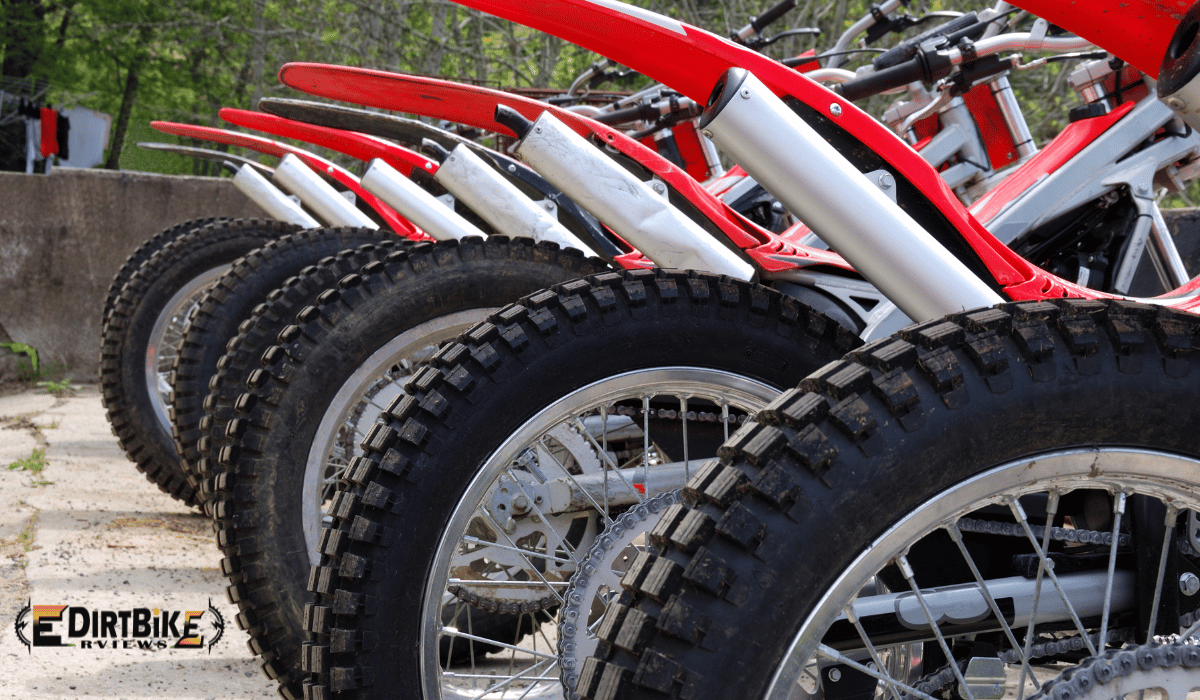
Choosing the right tires for your electric dirt bike is a decision that significantly influences both performance and safety. Tires are the sole contact point between the bike and the ground, playing a pivotal role in how the bike handles various terrains, responds to rider inputs, and performs under different riding conditions. This selection process becomes even more critical with electric dirt bikes, where the unique characteristics of electric power delivery can affect tire wear and performance.
Table of Contents
Selecting the Right Tires for Electric Dirt Bikes
The right tires can transform the riding experience, offering improved traction, stability, and confidence on the trail. Electric dirt bikes, known for their instant torque and consistent power output, require tires that can handle the immediate force and provide adequate grip to efficiently transfer this power into forward motion. The selection is not just about the tire’s ability to endure the power but also its compatibility with the bike’s design and the rider’s style, ensuring that the bike’s capabilities are fully utilized.
Impact of Tires on Performance and Safety
The impact of tires on an electric dirt bike’s performance is profound. Well-chosen tires enhance handling, allowing for sharper turns, better control of technical sections, and more effective braking. They can also reduce the risk of slippage and accidents, particularly in challenging weather or rugged terrain, safeguarding the rider. On the safety front, the right tires lessen the wear on the bike’s components, promote longer battery life by requiring less power to overcome rolling resistance, and generally contribute to a more stable and predictable ride.
Selecting the right tires for an electric dirt bike is crucial to ensuring optimal performance and safety. The choice should be informed by understanding how different tires interact with electric bike dynamics, the intended riding environment, and the rider’s preferences and skills. With the appropriate tires, riders can maximize their enjoyment and control, making every ride safer and more satisfying.
Understanding Tire Basics
Types of Dirt Bike Tires and Their Characteristics
Dirt bike tires come in various types, each designed to perform best under specific conditions:
- Knobby Tires: Characterized by large, spaced-out knobs, these tires offer excellent traction on soft, muddy, or loose surfaces. The knobs dig into the terrain, providing a grip that is essential for off-road riding.
- Intermediate Tires: These are the all-rounders of dirt bike tires, featuring medium-sized knobs with closer spacing. They perform well on various terrains, from soft dirt to hard-packed trails.
- Hard Terrain Tires: Designed for riding on hard, rocky, or compacted surfaces, these tires have smaller, tightly spaced knobs. They offer a larger contact area with the ground, enhancing grip on hard surfaces.
Tire Size and Its Implications for Riding
The size of the tire, typically denoted by width and diameter measurements, affects the bike’s handling and performance. Larger tires may provide better traction and stability due to a larger contact patch with the ground but can also increase rolling resistance, affecting acceleration and battery efficiency. Conversely, smaller tires might offer quicker handling and less rolling resistance but could reduce stability and traction.
Tread Patterns and Terrain Compatibility
The tread pattern on a dirt bike tire plays a crucial role in determining its suitability for different terrains:
- Mud Treads: Designed with wide-spaced, large knobs to prevent mud from clogging, these treads are ideal for wet and muddy conditions, allowing the tire to penetrate the surface and find traction.
- Sand Treads: These tires have a paddle-like design, optimal for loose, sandy terrains where the wide-spaced knobs help in creating a scooping action for better propulsion.
- Rocky Treads: Featuring smaller, closer-spaced knobs and often made of more complex rubber compounds, these tires are designed to grip onto rocky surfaces and resist puncture or damage from sharp edges.
In summary, understanding the basics of dirt bike tires, including the types, sizes, and tread patterns, is essential for selecting the right tire for your electric dirt bike. The choice should align with the typical riding conditions and personal riding style to ensure optimal trail performance, safety, and enjoyment.
Special Considerations for Electric Dirt Bikes
How Electric Dirt Bike Performance Influences Tire Choice
Electric dirt bikes exhibit characteristics that distinctly influence tire selection. Electric motors’ instant torque and continuous power delivery can lead to faster tire wear, especially if the tires are not designed to handle such forces. The acceleration characteristics of electric bikes mean that tires need to have excellent traction to prevent slipping and to utilize the motor’s power effectively. Additionally, since electric dirt bikes often have a heavier build due to the battery, choosing tires that can support the additional weight without compromising performance is crucial.
Durability and Wear Considerations for Electric Bikes
The durability of tires on electric dirt bikes is a significant consideration due to the unique demands of electric propulsion. Tires must be robust enough to withstand the constant torque and be made of compounds that resist wear from the electric motor’s immediate power output. The regenerative braking standard in electric dirt bikes also affects tire wear patterns, potentially causing the rear tire to wear down differently than on a gas-powered motorcycle. Therefore, when selecting tires for an electric dirt bike, it’s essential to consider those explicitly designed for electric or high-performance vehicles, as they are more likely to offer the durability and wear characteristics suited to the bike’s performance profile.
In summary, the performance attributes of electric dirt bikes require careful consideration when choosing tires. The right tires for an electric dirt bike should accommodate the machine’s power and weight and offer durability and wear characteristics that align with the unique aspects of electric biking. This careful selection ensures sustained performance and enhances the overall riding experience.
Selecting Tires for Different Riding Conditions
Tires for Muddy and Wet Conditions
When riding an electric dirt bike in muddy and wet conditions, tires with deep, wide-spaced knobs are ideal. These tread patterns help clear mud quickly and prevent the tire from clogging, maintaining traction in slippery conditions. The knobs’ depth ensures that the tire can penetrate the surface layer of mud to reach firmer ground beneath, providing better grip. Tires designed for wet conditions often have softer rubber compounds to enhance grip on slick surfaces.
Tires for Sandy or Loose Terrain
In sandy or loose terrain, where flotation and stability are critical, tires with a broader profile and flexible knobs are preferable. These features allow the tire to float over the sand rather than digging in, preventing the bike from bogging down. The flexible knobs adapt to the shifting sands, providing a larger contact area and improving traction. The tire’s construction should be durable enough to withstand the abrasive nature of sand, which can quickly wear down the tread.
Tires for Rocky or Hard-Packed Trails
Riding on rocky or hard-packed trails requires tires with solid sidewalls and dense, less pronounced tread patterns. These characteristics prevent punctures from sharp rocks and provide a stable ride on hard surfaces. The tread should offer enough grip to handle the terrain’s irregularities while being smooth enough to maintain contact with the ground. Hard compound tires are typically used in these conditions as they are more resistant to wear and tear and provide better stability at higher speeds.
In conclusion, selecting the right tires for specific riding conditions is crucial for enhancing the performance and safety of an electric dirt bike. To ensure optimal traction, stability, and durability, the tire choice should be based on the terrain’s nature, whether muddy, sandy, or rocky. By matching the tires to the expected riding conditions, riders can maximize their electric dirt bike’s capabilities and enjoy a safer, more satisfying experience on the trails.
Maintenance and Care for Dirt Bike Tires
Regular Inspection and Maintenance Routines
Proper tire maintenance is essential for ensuring the safety and performance of your electric dirt bike. Regular inspections should be part of your maintenance routine. Check for signs of wear, such as tread depth reduction, and look for damage like cuts, punctures, or embedded objects. Tire pressure should be checked before each ride, as incorrect pressure can affect the bike’s handling, increase tire wear, and potentially lead to tire failure.
Rotating the tires periodically can promote even wear, especially if one tire tends to wear down faster than the other due to the bike’s weight distribution or riding style. Cleaning the tires and removing debris from the treads after rides can also extend their life and prevent premature wear.
When to Replace Your Dirt Bike Tires
Knowing when to replace your dirt bike tires is crucial for maintaining optimal performance and safety. Key indicators for replacement include:
- Tread Wear: If the tread depth exceeds the manufacturer’s recommended limit, it’s time for a new tire. Worn treads compromise the tire’s grip and can significantly affect the bike’s handling, especially in adverse conditions.
- Age and Condition: Over time, tires degrade due to exposure to elements, even if they’re not used frequently. Cracks, hardening, or noticeable performance decline are signs that the tires need replacing.
- Damage: Any signs of severe damage, like deep cuts, punctures, or sidewall bulges, indicate that a tire needs to be replaced immediately to avoid the risk of blowouts or accidents.
Regular maintenance and timely tire replacement are vital for ensuring the performance and safety of your electric dirt bike. By keeping a close eye on the condition of your tires and addressing any issues promptly, you can enjoy a reliable and safe riding experience.
Personal Insights on Tire Selection for Electric Dirt Bikes
Experiences with Different Tires in Various Conditions
Through years of riding and testing various electric dirt bikes, I’ve learned that tire selection can dramatically alter the bike’s performance and the rider’s experience. For instance, while navigating muddy trails, tires with aggressive tread patterns provided the necessary grip to power through without getting stuck. In contrast, when riding on sandy dunes, wider tires with a paddle-like design offered the flotation needed to glide over the surface rather than digging in.
One particular experience that stands out was riding with a set of high-performance tires on rocky terrain. The tires’ reinforced sidewalls and specific tread design provided exceptional stability and traction, making a noticeable difference in handling sharp rocks and hard-packed paths. This experience underscored the importance of choosing tires specifically designed for the terrain and conditions of the ride.
Recommendations Based on Riding Style and Bike Specifications
Selecting the right tires for your electric dirt bike involves considering your riding style and the bike’s specifications. Tires with durable construction and aggressive tread patterns are essential for aggressive riders who push their bikes to the limits on challenging terrains. These riders should look for tires that can withstand high torque and provide excellent traction in various conditions.
Conversely, a less aggressive tread pattern might be more appropriate for casual riders or those using their bikes primarily on smooth trails, offering a balance between grip and riding comfort. Additionally, the weight and power output of the electric dirt bike should influence tire choice. Heavier and more powerful bikes require tires that can handle the extra load and power, emphasizing the need for durability and robustness.
In conclusion, my experiences have taught me that there is no one-size-fits-all answer to tire selection for electric dirt bikes. Instead, the best choice depends on careful consideration of the riding conditions, personal riding style, and the bike’s specific capabilities and characteristics. With the right tires, riders can enhance the performance and enjoyment of their electric dirt biking adventures.
Frequently Asked Questions (FAQs)
What size tires are best for an electric dirt bike?
The best tire size for an electric dirt bike depends on the bike’s design, intended use, and rider preference. Generally, larger tires provide better stability and are more capable of handling various terrains, making them suitable for off-road conditions. However, smaller tires might offer more agility and faster acceleration. When selecting tire size, it’s essential to refer to the bike manufacturer’s recommendations and consider the type of terrain you plan to ride on.
Do e-bikes require special tires?
While electric dirt bikes don’t necessarily require special tires, it’s advisable to choose tires that can withstand the unique demands of electric propulsion, such as instant torque and increased weight. Tires designed for electric bikes often have reinforced structures to handle the additional stress and provide better durability and performance.
Do I need ebike-specific tires?
Using ebike-specific tires can be beneficial due to their optimized design for electric bikes’ weight and power output. These tires usually feature more durable materials and construction to cope with electric dirt bikes’ higher torque and speeds. While not mandatory, ebike-specific tires can enhance the performance and safety of your ride.
How often should I replace the tires on my electric dirt bike?
Tire replacement frequency on an electric dirt bike depends on usage, terrain, and tire quality. Regularly inspect your tires for wear and damage, and replace them when the tread depth is below the recommended level or if there are signs of significant wear, damage, or aging. Active riders might need to replace their tires once a season or more, depending on the riding conditions.
These FAQs cover the essential aspects of tire selection and maintenance for electric dirt bikes, guiding riders in making informed decisions to optimize their bike’s performance and safety.
Conclusion
Choosing the right tires for an electric dirt bike is a critical decision that significantly impacts the bike’s performance, safety, and overall riding experience. This comprehensive discussion has highlighted the factors riders must consider, including tire size, tread pattern, terrain compatibility, and whether to opt for e-bike-specific tires.
Recap of Key Points on Choosing the Right Tires
- Tire Size and Type: Selecting the appropriate size and type of tire for your electric dirt bike is essential for optimal performance and handling. Your choices will vary based on terrain and your personal riding style.
- Tread Patterns: The tread pattern should match the riding conditions you most frequently encounter, whether mud, sand, rocky trails or hard-packed dirt paths.
- Durability and Performance: Considering the unique demands of electric dirt bikes, such as higher torque and potentially heavier weights, it’s advisable to choose tires with enhanced durability and performance.
The Significance of Tire Selection in Enhancing the Electric Dirt Biking Experience
The right tires can transform an electric dirt bike ride from good to exceptional. They ensure better traction, improved stability, and a safer riding experience, allowing riders to fully exploit their electric bikes’ capabilities. The silence and power of electric dirt biking, combined with the perfect tire choice, can elevate the adventure, allowing riders to confidently tackle diverse terrains and enjoy the journey to its fullest.
In summary, tire selection is a fundamental aspect of electric dirt bike preparation that should not be overlooked. With the right tires, riders can enhance their electric dirt biking experience, ensuring each ride is as thrilling, safe, and satisfying as possible. By understanding and applying this article’s insights, riders can make informed decisions that optimize their bike’s performance and suit their riding preferences.
- Electric Dirt Bike For Kids2 years ago
Electric Dirt Bikes Under $1000: Your Ultimate Guide to Affordable Off-Road Adventure
- Electric Dirt Bike For Adults2 years ago
Top 11 Electric Dirt Bikes for Adults in 2024: Unleashing the Future of Off-Road Adventure
- Electric Dirt Bike For Adults2 years ago
Unleashing Power and Innovation: The Stark Varg Electric Dirt Bike Reviewed
- Electric Dirt Bike For Adults2 years ago
Unleashing the Thrill: MotoTec Venom 72V 12000W Electric Dirt Bike Review
- Electric Dirt Bike For Adults2 years ago
Unveiling the Segway Dirt eBike X260: Power, Performance, and Adventure
- Electric Dirt Bike For Adults2 years ago
Conquering Trails with the Sur-Ron Light Bee X: A Comprehensive Review
- Electric Dirt Bike For Kids2 years ago
Razor MX125 Electric Dirt Bike Review: The Ideal Starter Bike for Kids
- Electric Dirt Bike For Adults2 years ago
Unleashing the Power of the Rawrr Mantis: The Ultimate Electric Dirt Bike Experience














